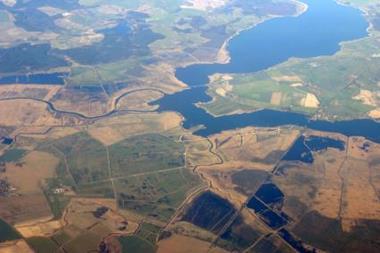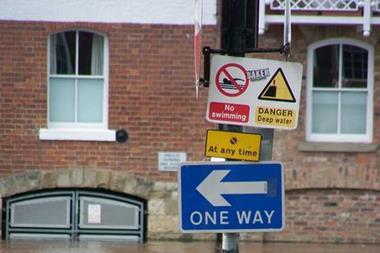Andrew Holt finds that some insurers have been slow to act on developing climate change strategies
The magnitude and frequency of extreme weather events such as hurricanes, floods and wildfires, which could be set to rise further as a result of climate change, puts insurance firms in the eye of the storm.
A new report published by F&C Asset Management goes further, warning that some insurance companies have been slow to act and urgently need to develop climate change strategies. The report also calls on insurers to engage with policy makers and regulators to bring about systemic changes.
F&C argues that a stable and efficient insurance sector provides a vital underpinning to society and economic growth by providing a social safety net and incentivising individuals and businesses to take intelligent risks.
To date, traditional risk models have relied on historic claims data to price forward-looking risk and determine underwriting requirements. But climate change means that the past is increasingly an unreliable guide to the future. To the extent that risk may be systematically under-priced, the report argues this could significantly impact the profitability of the sector, and have implications for capital adequacy requirements.
While the impact of climate change will primarily fall on property cover, F&C says that there are are implications for other areas and insurers’ businesses too.
Businesses operating in vulnerable areas face the risk of having their operations interrupted; health insurance may be impacted by climate change increasing mortality and morbidity rates as diseases enter new territories and, additionally, both liability and professional indemnity insurance could suffer as companies find themselves facing law suits under changing legal regimes and customers sue property developers for damages not covered by policies.
While some insurers have been encouraging customers to reduce the risks they face, for example by reducing premiums for those who install flood defences on their homes, a more common response has been for insurers to withdraw from high risk areas forcing the state to step in.
For instance, following numerous extreme hurricanes in the southern states of the US the State of Florida has become the number one provider of residential insurance as several firms have withdrawn from the market.
The report also notes that while the insurance industry is the single largest gatherer of capital in the global economy, with $16.6trn of assets under management, it concludes that “many insurers fail to see a link between climate change and the value of the assets they hold”.
While the report cites some excellent examples of good practice, including Munich Re and Swiss Re in the field of risk pricing, overall it assesses that the response of the industry to climate change has been patchy with European insurers much more active than their US counterparts.
The lack of action in the US, with some notable exceptions such as AIG and Travelers, stems from a combination of weaker acceptance of climate science, limited public policy action, and state-based insurance regulatory regimes that limit the industry’s ability to respond as effectively as it should by, for example, putting pressure to keep pricing low.
Hosted by comedian and actor Tom Allen, 34 Gold, 23 Silver and 22 Bronze awards were handed out across an amazing 34 categories recognising brilliance and innovation right across the breadth of UK general insurance.











































No comments yet